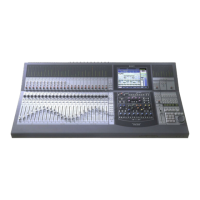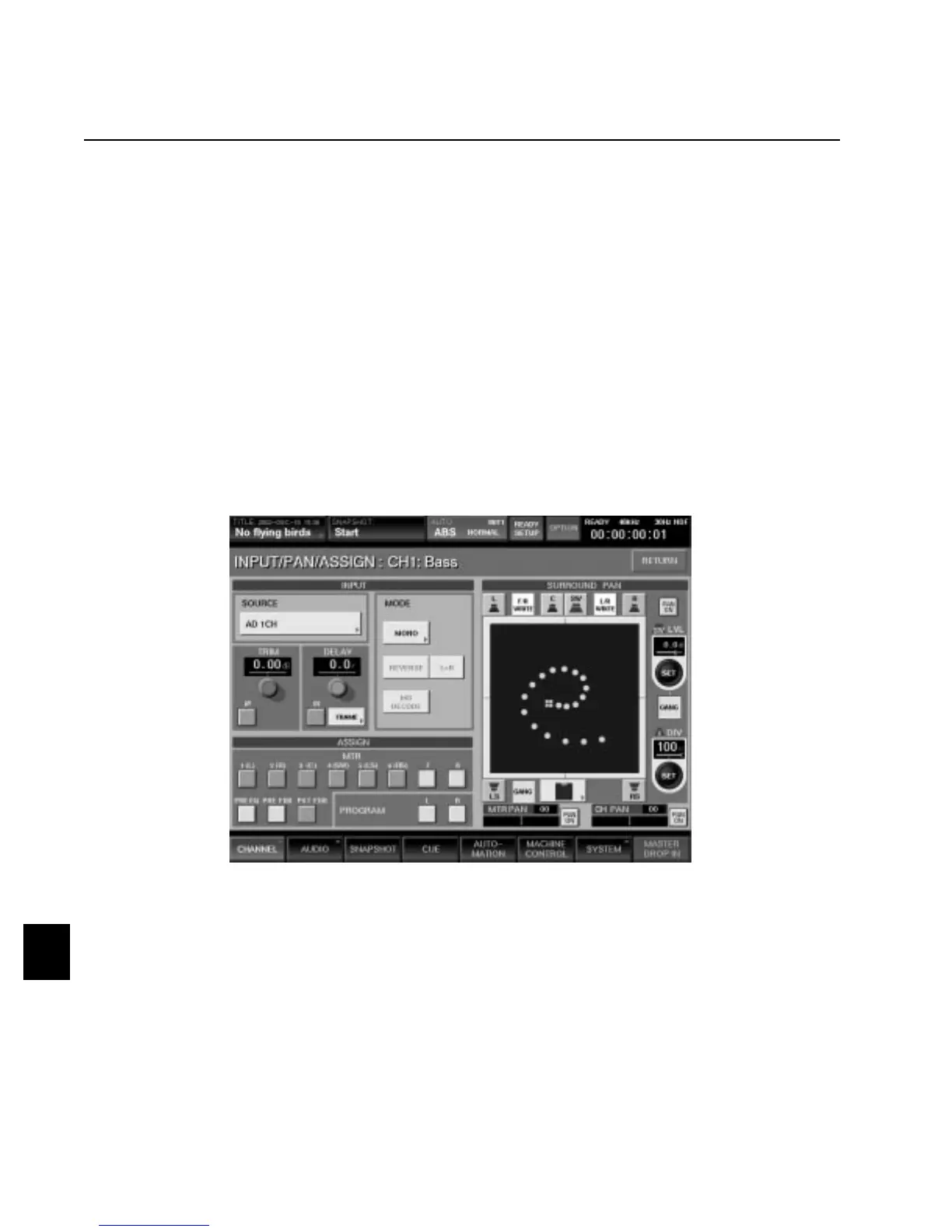Appendix B Surround Applications
Appendix B
B-6
Surround Mixing
Once the DMX-R100 is configured for surround monitoring, it's an easy process to do surround mixing.
1 Make all interconnections between the Control Room outputs and your surround speakers, and then set
up your DMX-R100 for surround monitoring, as described in the preceding pages.
2 Go to the Input/Pan/Assign window. All icons in the Surround Pan section should be active. You can
now statically position any signal assigned to one or more of MTR buses 1 - 6 either by selecting a preset
from the Surround Position drop-down menu or by simply touching the Surround Pan display/operation
area. Note that surround panning moves made to channels within a stereo-linked pair affect only that
channel and not the paired channel.
3 To perform dynamic surround panning of any signal assigned to one or more of MTR buses 1 - 6
(that is, to move the signal around in real time in the surround space), simply trace a trajectory with your
finger in the Surround Pan display/operation area. (See Figure 3-5) The square pointer in the display
indicates the current position of the signal, and the white circles indicate the trajectory of the pan.
The faster the pan move, the further apart the circles are generated; the slower the pan move, the closer
together the circles are generated.
Figure 5
4 You can also selectively turn off buses / speakers simply by touching their icon or by turning off the
associated bus (for example, to turn off the center channel, either touch the center channel speaker icon
or deassign the signal from bus 3). For example, one particularly effective way to position a lead vocal in a
surround space is to assign it to the center and rear left/right channels (buses 3, 5 and 6) and then bring
it "out" into the interior space slightly. Because no signal is being fed to the left and right speakers, the
signal will appear to move closer to the listener in a more dramatic fashion.

